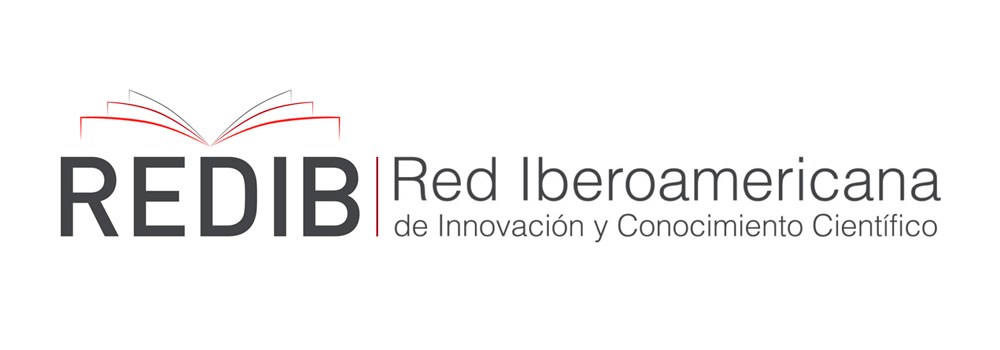B-learning no ensino da língua inglesa em nível superior: uma revisão sistemática
DOI:
https://doi.org/10.35622/j.rie.2022.02.006Palavras-chave:
Aprendizagem combinada, educação universitária, ensino de inglês, tecnologia educacionalResumo
O B-learning é amplamente considerado como uma abordagem que combina os benefícios dos componentes de aprendizagem online e presencial. No entanto, a combinação de componentes instrucionais online e em sala de aula apresentados por essa abordagem tem gerado preocupações ao longo dos anos. A revisão sistemática a seguir tem como objetivo mostrar como o b-learning influencia o ensino da língua inglesa em estudantes universitários por meio da análise de experiências e percepções. O uso da metodologia Prism foi considerado para fins de pesquisa. As seguintes bases de dados foram utilizadas para esta revisão: Scopus, Scielo, Science direct e Redalyc, encontrando 260 artigos e selecionando 16 artigos para uma revisão em profundidade. Os resultados mostram que a maioria das experiências com blended learning foram benéficas na área de ensino de inglês. Além disso, as percepções de professores e alunos são positivas e decisivas para o uso futuro das tecnologias digitais. Esta revisão destaca a necessidade de realização de pesquisas que proponham soluções para enfrentar os desafios de alunos, professores e instituições de ensino na aprendizagem combinada, bem como a determinação das características do modelo para uma implementação acessível em sala de aula.
Referências
Bartolomé, A., García, R., & Aguaded, I. (2017). Blended learning: panorama y perspectivas. RIED. Revista Iberoamericana de Educación a Distancia, 21(1), 33. https://doi.org/10.5944/ried.21.1.18842 DOI: https://doi.org/10.5944/ried.21.1.18842
Bearman, M., Smith, C., Carbone, A., Slade, S., Baik, C., Hughes, M., & Neumann, D. (2012). Systematic review methodology in higher education. Higher Education Research & Development, 31(5), 625-640. https://doi.org/10.1080/07294360.2012.702735 DOI: https://doi.org/10.1080/07294360.2012.702735
Boelens, R., De Wever, B., & Voet, M. (2017). Four key challenges to the design of blended learning: A systematic literature review. Educational Research Review, 22, 1-18. https://doi.org/10.1016/j.edurev.2017.06.001 DOI: https://doi.org/10.1016/j.edurev.2017.06.001
Bonk, C., & Graham, C. (2012). The handbook of blended learning: global perspectives, local designs - Curtis J. Bonk, Charles R. Graham - Google libros. Pfeiffer Publishing.
Chaves, A. (2018). La utilización de una metodología mixta. En Rompiendo Barreras en la Investigación (1ra ed., pp. 164-182). UTMACH.
Du, X. (2013). English grammar automatic output model under non-native environment. Theory and Practice in Language Studies, 3(1), 29-34. https://doi.org/10.4304/tpls.3.1.29-34 DOI: https://doi.org/10.4304/tpls.3.1.29-34
Dziuban, C., Graham, C., Moskal, P., Norberg, A., & Sicilia, N. (2018). Blended learning: the new normal and emerging technologies. International Journal of Educational Technology in Higher Education, 15(1), 3. https://doi.org/10.1186/s41239-017-0087-5 DOI: https://doi.org/10.1186/s41239-017-0087-5
Esparaza, M., Salinas, V., & Glasserman, L. (2015). La gestión del aprendizaje en la modalidad b-learning frente a la modalidad presencial en la enseñanza de la gramática inglesa B-learning modality vs. face to face modality learning management in english grammar teaching. Revista Apertura, 7(2), 1-10. http://www.udgvirtual.udg.mx/apertura/index.php/apertura/article/view/682/479
Ferriman, N. (2013). The impact of blended e-learning on undergraduate academic essay writing in English (L2). Computers & Education, 60(1), 243-253. https://doi.org/10.1016/j.compedu.2012.07.008 DOI: https://doi.org/10.1016/j.compedu.2012.07.008
Halverson, L., Graham, C., Spring, K., Drysdale, J., & Henrie, C. (2014). A thematic analysis of the most highly cited scholarship in the first decade of blended learning research. The Internet and Higher Education, 20, 20-34. https://doi.org/10.1016/j.iheduc.2013.09.004 DOI: https://doi.org/10.1016/j.iheduc.2013.09.004
Hockly, N. (2018). Blended learning. ELT Journal, 72(1), 97-101. https://doi.org/10.1093/elt/ccx058 DOI: https://doi.org/10.1093/elt/ccx058
Hrastinski, S. (2019). What do we mean by blended learning? TechTrends, 63(5), 564-569. https://doi.org/10.1007/s11528-019-00375-5 DOI: https://doi.org/10.1007/s11528-019-00375-5
Hubackova, S. (2015). Blended learning – new stage in the foreign language teaching. Procedia - Social and Behavioral Sciences, 197, 1957-1961. https://doi.org/10.1016/j.sbspro.2015.07.582 DOI: https://doi.org/10.1016/j.sbspro.2015.07.582
Islas, C. (2014). El b-learning: un acercamiento al estado del conocimiento en Iberoamérica 2003-2013. Apertura, 6(1), 86-97. http://www.udgvirtual.udg.mx/apertura/index.php/apertura/article/view/500
Jia, J., Chen, Y., Ding, Z., & Ruan, M. (2012). Effects of a vocabulary acquisition and assessment system on students’ performance in a blended learning class for English subject. Computers & Education, 58(1), 63-76. https://doi.org/10.1016/j.compedu.2011.08.002 DOI: https://doi.org/10.1016/j.compedu.2011.08.002
Koſar, G. (2016). A study of EFL instructors⿿ perceptions of blended learning. Procedia - Social and Behavioral Sciences, 232, 736-744. https://doi.org/10.1016/j.sbspro.2016.10.100 DOI: https://doi.org/10.1016/j.sbspro.2016.10.100
Levano, L., Sanchez, S., Guillén, P., Tello, S., Herrera, N., & Collantes, Z. (2019). Competencias digitales y educación. Revista de psicología educativa, 7(2). http://revistas.usil.edu.pe/index.php/pyr/article/view/329 DOI: https://doi.org/10.20511/pyr2019.v7n2.329
Lungu, I. (2013). The increasing need for blended-learning models in courses of english for specific courses in Romanian Universities. Procedia - Social and Behavioral Sciences, 76, 470-475. https://doi.org/10.1016/j.sbspro.2013.04.148 DOI: https://doi.org/10.1016/j.sbspro.2013.04.148
Macedo, A., & Finardi, K. (2020). Integrating digital technologies in Brazilian English language teacher education through blended learning. Educação em Revista, 36, 233799. https://doi.org/10.1590/0102-4698233799 DOI: https://doi.org/10.1590/0102-4698233799
Martin, F., Ahlgrim, L., & Budhrani, K. (2017). Systematic Review of Two Decades (1995 to 2014) of Research on Synchronous Online Learning. American Journal of Distance Education, 31(1), 3-19. https://doi.org/10.1080/08923647.2017.1264807 DOI: https://doi.org/10.1080/08923647.2017.1264807
Maulan, S., & Ibrahim, R. (2012). The teaching and learning of english for academic purposes in blended environment. Procedia - Social and Behavioral Sciences, 67, 561-570. https://doi.org/10.1016/j.sbspro.2012.11.361 DOI: https://doi.org/10.1016/j.sbspro.2012.11.361
Mohammadi, E., & Mirdehghan, S. (2014). A CMC Approach to teaching phrasal-verbs to Iranian EFL senior high school students: the case of blended learning. Procedia - Social and Behavioral Sciences, 98, 1174-1178. https://doi.org/10.1016/j.sbspro.2014.03.531 DOI: https://doi.org/10.1016/j.sbspro.2014.03.531
Money, J., Dinning, T., Nixon, S., Walsh, B., & Magill, C. (2016). Co-creating a blended learning curriculum in transition to higher education: a student viewpoint. Creative Education, 07(09), 1205-1213. https://doi.org/10.4236/ce.2016.79126 DOI: https://doi.org/10.4236/ce.2016.79126
Morales, S., & Ferreira, A. (2008). La efectividad de un modelo de aprendizaje combinado para la Enseñanza del inglés como lengua extranjera. RLA. Revista de lingüística teórica y aplicada, 46(2), 95-118. https://doi.org/10.4067/S0718-48832008000200006 DOI: https://doi.org/10.4067/S0718-48832008000200006
Pham, H., & Ho, T. (2020). Toward a ‘new normal’ with e-learning in Vietnamese higher education during the post COVID-19 pandemic. Higher Education Research and Development, 39(7), 1327-1331. https://doi.org/10.1080/07294360.2020.1823945 DOI: https://doi.org/10.1080/07294360.2020.1823945
Pinto, A., Sánchez, M., García, F., & Casillas, S. (2017). Students’ perceptions and attitudes towards asynchronous technological tools in blended-learning training to improve grammatical competence in English as a second language. Computers in Human Behavior, 72, 632-643. https://doi.org/10.1016/j.chb.2016.05.071 DOI: https://doi.org/10.1016/j.chb.2016.05.071
Rico, J., Ramírez, M., & Montiel, S. (2016). Development of oral competence through the use of Open Educational Resources. Apertura. https://www.redalyc.org/journal/688/68845366006/
Ruiz, F., & Belmonte, A. (2014). Young people as users of branded applications on mobile devices. Comunicar, 22(43), 73-81. https://doi.org/10.3916/C43-2014-07 DOI: https://doi.org/10.3916/C43-2014-07
Saboowala, R., & Manghirmalani, P. (2018). Student teachers’ attitudes towards blended learning. Journal of Education and Human Development, 7(2). https://doi.org/10.15640/jehd.v7n2a2 DOI: https://doi.org/10.15640/jehd.v7n2a2
Saborío, S. (2019). Curricular proposal on a blended approach and an informative multimedia for didactic resources for the teaching of English course. Revista Electronica Educare, 23(3). https://doi.org/10.15359/ree.23-3.11 DOI: https://doi.org/10.15359/ree.23-3.11
Salinas, J., Gisbert, M., De Benito, B., & Pérez, A. (2017). Blended learning, más allá de la clase presencial. RIED. Revista Iberoamericana de Educación a Distancia, 21(1), 195. https://doi.org/10.5944/ried.21.1.18859 DOI: https://doi.org/10.5944/ried.21.1.18859
Tosun, S. (2015). The effects of blended learning on EFL students’ vocabulary enhancement. Procedia - Social and Behavioral Sciences, 199, 641-647. https://doi.org/10.1016/j.sbspro.2015.07.592 DOI: https://doi.org/10.1016/j.sbspro.2015.07.592
Tuncay, N., & Uzunboylu, H. (2012). English language teachers’ success in blended and online e-learning. Procedia - Social and Behavioral Sciences, 47, 131-137. https://doi.org/10.1016/j.sbspro.2012.06.626 DOI: https://doi.org/10.1016/j.sbspro.2012.06.626
Turpo, O. (2015). Perspectiva de la convergencia pedagógica y tecnológica en la modalidad blended learning Perspective of Pedagogical and Technological Convergence in Blended Learning. Revista de Educación a Distancia (RED), 39, 1-14. https://revistas.um.es/red/article/view/234261
Villalonga, C., Díez, R., & Alemán, I. (2018). Aprendizaje en red. En Calidad informativa en la era de la digitalización: fundamentos profesionales vs. infopolución (pp. 131-142). Dykinson. https://doi.org/10.2307/j.ctv9zchsb.11 DOI: https://doi.org/10.2307/j.ctv9zchsb.11
Woodfield, W., Graham, C., Bodily, R., & Sandberg, D. (2016). A qualitative analysis of institutional drivers and barriers to blended learning adoption in higher education. Internet and Higher Education, 28, 17-27. https://doi.org/10.1016/j.iheduc.2015.08.003 DOI: https://doi.org/10.1016/j.iheduc.2015.08.003
Yang, Y., & Kuo, N. (2021). Blended learning to foster EFL college students’ global literacy. Computer Assisted Language Learning. https://doi.org/10.1080/09588221.2021.1900874 DOI: https://doi.org/10.1080/09588221.2021.1900874
Yang, Ya, Chuang, Y., Li, L., & Tseng, S. (2013). A blended learning environment for individualized English listening and speaking integrating critical thinking. Computers & Education, 63, 285-305. https://doi.org/10.1016/j.compedu.2012.12.012 DOI: https://doi.org/10.1016/j.compedu.2012.12.012
Publicado
Edição
Seção
Licença
Copyright (c) 2021 Stefany Noa, Kevin Laura, Lesly Apayco, Zoraida Ramos, Yolanda Lujano

Este trabalho está licenciado sob uma licença Creative Commons Attribution 4.0 International License.



























